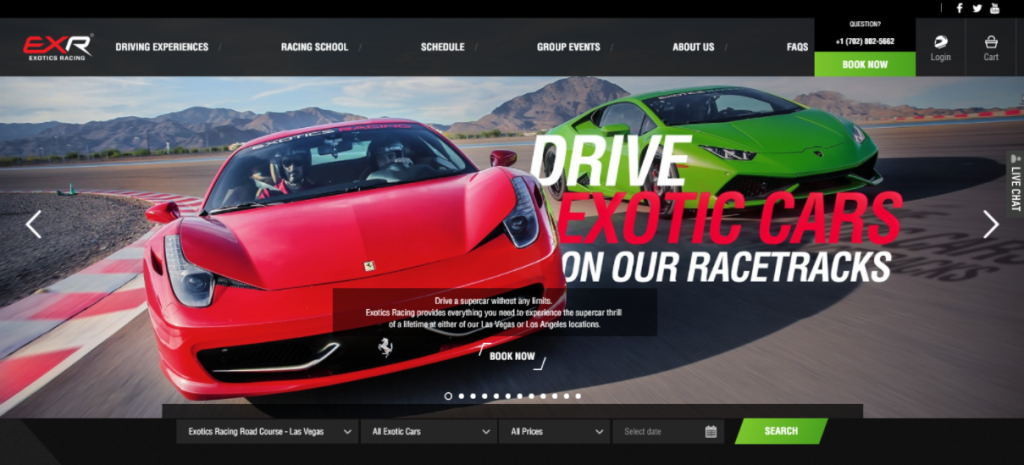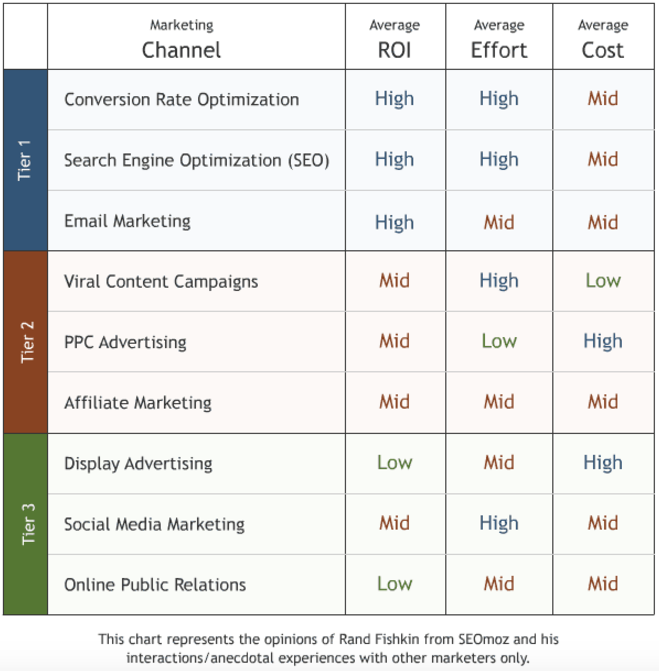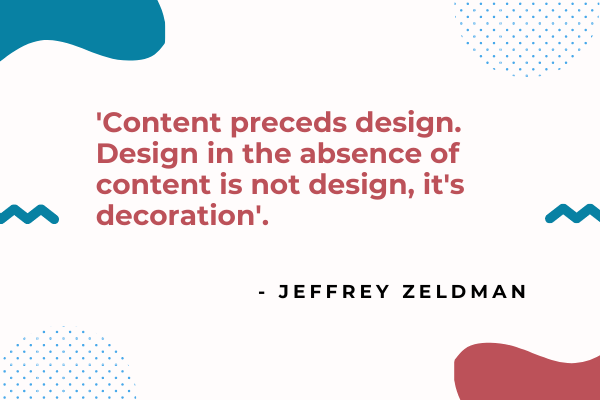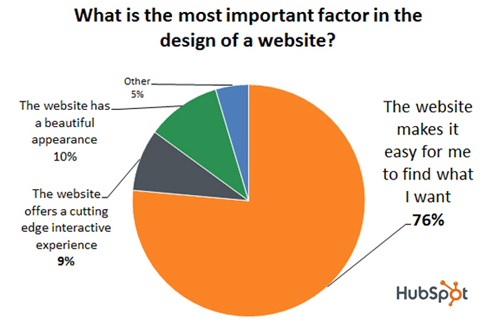Planning to launch a new website? First of all, congratulations on the new endeavor!
If you feel a little overwhelmed and unsure of how to best approach your new project, this article is for you. We’ll show you in bird’s-eye view what you need to take into consideration when planning your new website:
- Key issues to address
- The optimal sequence of steps
- Major options you’ll probably face along the way.
You can also use this article as a blueprint to prepare project specifications for a vendor (web development team, designer, SEO agency, etc.).
1. Goals
What Do You Want to Achieve With this Website?
It is a good idea to start with formalizing the goals of your website and making sure that anyone involved in your project is on the same page.
If you are working on a new website you will probably be interested in marketing and sales goals, such as:
- Generate leads
- Close sales
- Increase brand awareness.
There are other important goals that your site may serve. For example, many of the websites and web apps that we have built are aimed at improving business operations:
- Automate business processes
- Reduce operational expenses.
These goals are usually achieved with websites that have a complex back end, which enables self-service and automation of internal operations (e.g. order processing, accounting, reporting).

Exotics Racing is a great example of a web project that pursues not only sales and marketing goals but also streamlines the entire business. Behind its ‘pretty face’ this website has very advanced ‘back office’ features, such as personnel records, inventory & fleet management, order processing, CRM, and reporting among others.
2. Resources
How Much Time and Money Can You Spend on This Website?
This is not the question of how much your website will cost and how long it will take to build. Too early for that. At this point it is merely a question of what resources you can allocate:
- Budget - how much can you afford to invest
- Time - when do you want or need it to be finished.
The notion of that will guide many of your decisions of this project (e.g. custom design vs template, a list of features, etc.). And it will be the starting point for the final estimation, which you might want to make together with your vendor(s).
You will be ready for the final estimation by the time you’ll have a clear idea of how your website should be, i.e. answer the questions of all the eight points of this article.
3. Basic Marketing
At this point, it would be useful to define what audience you are going to attract with this site, who you are going to compete with, and how you are going to stand out. This will determine your website content, design, and promotion strategies.
- Target Audience
‘The aim of marketing is to know and understand the customer so well the product or service fits him and sells itself.’ – Peter Drucker, influential business thinker of the 20th century
On the contrary, if you don’t aim your website at a very specific type(s) of clients/readers you’ll likely end up with weak marketing messages, boring content, and ineffective promotion.
These are the key things to know about your target audience:
- Who are they? - What problem are they looking for a solution for?
- What alternatives to your products/services are they evaluating?
There is a number of ways you can discover this information:
- Conduct deep insightful interviews over the phone or face to face - Survey your audience, to get more representative data - Dig into Google Analytics of the old site, if you have one
- Research online (client websites and social media profiles).
Here is an article on target audience research from ConversionXL.
- Competition
Your clients will definitely compare you to your competitors and you’d better look good in this comparison. In order to do this, you need to research and analyze your competitors.
- Who do your clients compare you to?
- What do your competitors offer and how do they stand out?
- What are their strengths and weaknesses (according to your target audience)?
- What audiences do your competitors target and how?
- What promotion channels do they use and how?
These are good questions to start with. Here is a handy guide on competitor research from Hubspot.
- Unique Selling Proposition (USP)
To define your USP you need to answer one question: “Why should your target clients choose you?”. Given the strengths and weaknesses of your competitors. Given the problem that your target audience is looking to solve.
If you don’t already know your USP defining it can be a challenging task, that’s why you would probably have to first build assumptions and, then, test and tweak them. This guide may help you get started.
4. Promotion
How are you going to attract an audience to your website?
Since your new website is probably not your end goal, but rather a means, it is wise to think about how you are going to attract traffic to it right from the beginning.
First of all promotional channels you’ll choose will influence your budget, second of all they will influence how your site is going to be built.
The following chart, by Rand Fishkin (founder of Moz), shows different marketing channels and their estimated impact:

However, from all the channels SEO will have the biggest impact on your website development. If you know, that you are going to do SEO, it is very wise to start developing your SEO strategy before or together with the other steps of content creation, design, and development.
You might decide to hire an SEO agency or do it yourself. Either way, you will start with:
- Website structure
- Keywords
- Technical on-page optimization.
The ‘link building’ part will come only after the launch. If you are new to SEO, here is step-by-step guide by the guru himself Neil Patel.
5. Content
What Content Does Your Website Require?

In website creation form should follow function, that’s why content comes first and design second. In other words, in most cases, it will be very wise to write all or most of the site content before you get to design and development. This article by inVision gives a great explanation of why content should precede design.
The following are the key milestones in developing content:
- Develop a content plan - this plan should be built on the problems and interests of your target audience(s) and take into consideration your competitor analysis and SEO.
- Design funnels - develop funnels, based on the buying process of your clients and questions they have at each stage.
- Generate content - make each piece compelling and useful to your target audience.
You can start by following this great Content Marketing Checklist by Velocity Partners.
6. Design
What will your website look like?
It is useful to think of a design as a vehicle for your website’s content. First and foremost your design should make it easy for your users to find the information they were looking for and complete the actions they want to take. Only after that comes the aesthetics part, which is also important.

Nowadays, you can achieve this in two ways: custom design or a template.
A few years ago, it would have been very unprofessional to put these two options together, as templates were considered unacceptable for a serious type of project. Since then, there has been so much improvement in the area, that web design templates have grown into a viable option for small to medium-sized businesses.
Each option has its pros and cons, here are the major ones:
| Template | Custom | |
| Costs | Low, unless you require a lot of customization | High from the start |
| Uniqueness | Low, many people may use the same template | High, only you will use it |
| Flexibility | Low, only a few options to customize | High, you can do literally anything |
| Time to launch | Hours to a month | Months... |
What you choose will depend on your requirements and resources.
Templates are best when:
- You need to speed up the website building process and want to save your time and effort.
- You are on a low budget.
- Your website requires standard functionality and you don’t expect a lot of changes in the near future.
Custom website design is much better when:
- You anticipate a lot of changes in the future. For example, when you are in the process of making business assumptions and testing them.
- Most of your website functionality is unique.
- You already have a brand book and should follow the company’s branding and design standards.
7. Development
How will your website be programmed?
As soon as you’ll get all designs and content ready, you’ll have a clear idea of what your site should do, it will be time for development. However, you may want to start thinking about development already at the planning and estimation stage.
Unless you are going to program yourself, you don’t need to be concerned with all the aspects of the website development checklist.
The most important thing you need to do with regard to web development is deciding on the functionality and requirements of your internet site. Your web developers will rely on this when choosing the right technologies and developing them.
'Who? What? How? Why? These are the basic questions to ask when you’re trying to determine functional requirements for website development.' - Andy Mcllwain, Content & Community at GoDaddy.
To come up with a website functionality checklist answer the following questions:
- Who is going to use your site? (different user roles: admin, contributor, seller, buyer…)
- What tasks does each of these users have to accomplish?
- How are they going to do it?
- Why do they have to do it?
You should end up with a list of functions and requirements for each user role. It is likely that developers will need to further specify this list, but it will be a very good start.
We also advise our clients to prioritize their feature lists from ‘must have’ to ‘nice to have’. Feature prioritization is especially useful for startups, allows to:
- Figure out what should go into the very first MVP version, so that we could release this minimal version in the shortest period, start testing and getting feedback from the users
- Regulate your project budget, by cutting down on ‘nice to have’ features.
Here is our guide for estimating the cost of your website or web app.
8. Conversion
How are you going to convert visitors into clients?
It is a good practice to develop your site with conversion optimization in mind. And it is also useful to check everything against best practices for conversion optimization after major chunks of work are finished.
There are many factors that influence website conversion, but here are the main ones:
- Offerings - formulate what you sell in a way that is clear and compelling to your target audience.
- CTA’s - each page should have one relevant and effective Call to Action.
- Landing pages - should contain one offer and one CTA per landing page.
- The design should be conversion-oriented, directing users’ attention towards your offerings and the actions you want them to take.
This website pre-launch checklist from ConversionXL will get you started - ‘9 Conversion Rate Optimization Principles to Get You Started’.
Conclusion
In our opinion, this checklist for creating a website covers the most important points you should consider when planning your work on the new web project.
We advise starting with business goals you want to achieve with your website and make sure everyone involved understands them. Then, you may want to assess the resources you will be able to allocate to this project, as this will influence a lot of decisions in the future.
And another very important thing worth doing, before you get to writing, designing, and programming, is your marketing homework. Define, or if you already know, formalize your target audience, competition, and unique selling proposition.
Based on this knowledge of your target audience you can already start planning promotion and content creation. It is useful to think of ways you are going to attract traffic early on, as the marketing channels you choose will influence how your website should be created, especially when it comes to SEO. As for the generation of content, you will save yourself a lot of trouble if you do it before you get to design. Develop your content plan and the content itself keeping your target audience (personas) and their buying journey.
When it comes to design you’ll likely face two options: custom or a template. Your choice will depend on the requirements and resources you can devote to this part of your project.
In order to plan the development of your internet site complete the list of specifications, prioritize them and hand them over to your web development team.
And last but not least, evaluate all this work from the conversion optimization point of you. Check how well your website can convert visitors into customers.
Get a cost estimate for your custom website.
Contact UsRate this article!
5







 Sign in with Google
Sign in with Google
Comments (0)